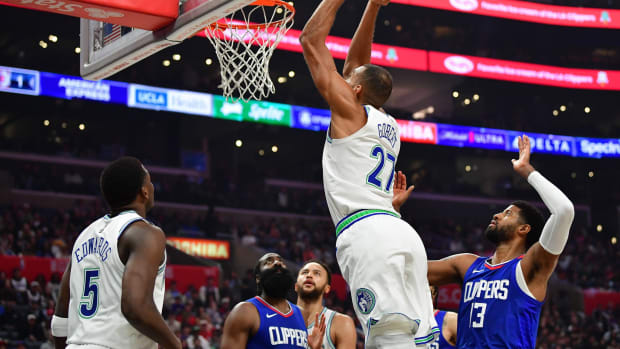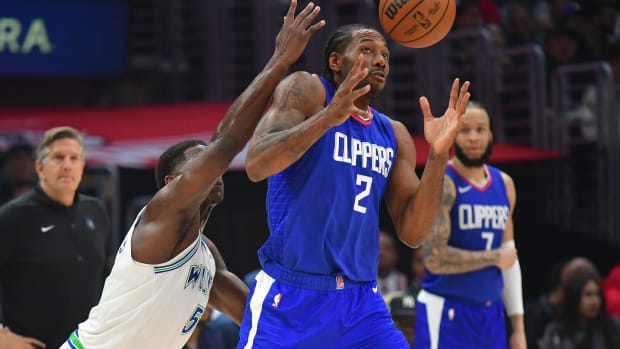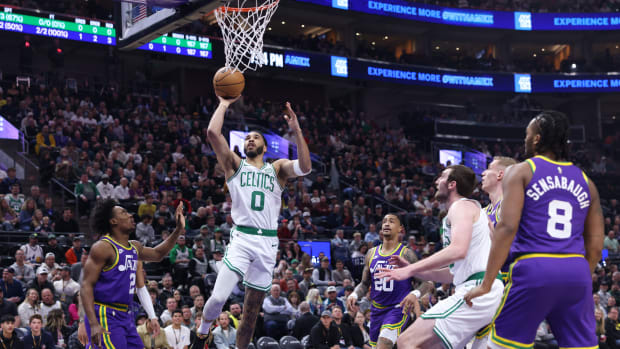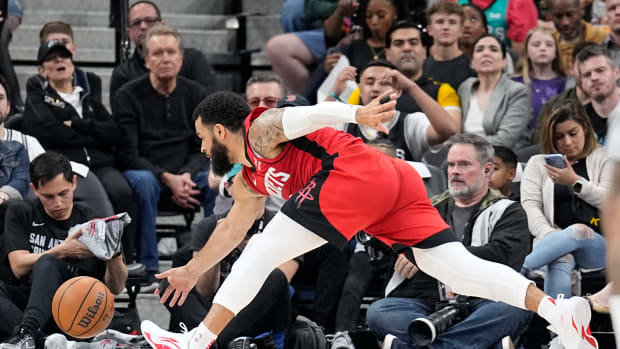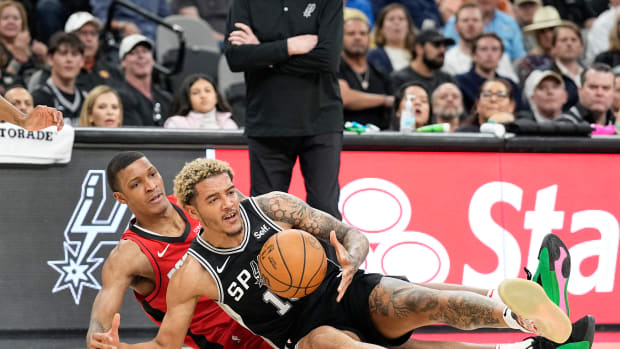Searching for a Silver Lining in Minnesota’s Historic Collapse
Last night there were stretches of frenetic chaos that, at the time, might have literally contained the most celebratory moments in Timberwolves franchise history. In front of a deafening home crowd that has long been starved for reasons to cheer—Minnesota has won one playoff game at home since 2005—a quick 12-0 lead soon mushroomed into a 26-point advantage, spawning M-V-P chants for Karl-Anthony Towns, Anthony Edwards, Patrick Beverley and Naz Reid. (This is not a lie.)
Even after the Grizzlies cut their deficit to seven at halftime by holding the Wolves scoreless in the last 5:44 of the second quarter, when Minnesota forward Jaden McDaniels hit a three with 4:28 remaining in the third quarter, the Wolves had 73 points and the Grizzlies had 50. But in the spirit of classic postseason collapses like Clippers-Rockets and Jazz-Clippers before it, Minnesota’s massive lead soon evaporated and a historic comeback engraved itself in NBA lore. Memphis won by nine and took a 2-1 series lead.
As they watch film today, both teams will feel like they should’ve won, conceding significant mental and physical lapses. The actual loser, though, is in a particularly strange position: Not only did the Timberwolves build two 20-plus point leads against a 56-win team that spent most of the season inflicting that same type of pain on the rest of the league, but they did so by re-establishing some of the very best character traits that helped get them where they are.
And as immaterial as it might be to suggest that they “found” something on a night that will forever live in NBA infamy, the Wolves spent most of the game as the very best version of themselves on defense, a critical area that had not shown itself through the series’ first two games. In a series that still has a lot of basketball left in it, featuring two young, mutually inexperienced teams that have minimal playoff resumes, this has meaning.
“Their defensive activity was unreal tonight,” Grizzlies coach Taylor Jenkins said. “I haven't seen a team in a long time play with that physicality, those rotations. I mean, every time we tried to spray the ball out, there was someone on us at the three-point line. They were taking our first, second, third-option away. … We were frantic. We couldn't even execute in the half court.”
During the regular season, the Timberwolves led the NBA in points off turnovers and were second in opposing turnover rate. They finished third in deflections per game and third in loose balls recovered. With an aggressive pick-and-roll strategy that forces the ball to fly through a thicket of moving arms. In Game 3, Memphis’s turnover rate was 18.6%, a mark they topped only four times all season.
“The team had 18 turnovers. [Minnesota] scored 28 points off of our turnovers,” Jenkins said. “I kept saying, ‘They're shifting, they're coming, they're stripping, they're blocking from behind, just make the simple play.’... Their defensive activity was phenomenal. Even when we did move it early they were rotating out. Can we move it again? Can we move it again? Can we move it again to try to break them down?”
The Wolves also finished with a whopping 15 deflections and coaxed seven turnovers from Ja Morant, who wasn’t able to attack in transition, draw fouls or get downhill like he had been. (Morant finished 4-for-15 in the paint and didn’t attempt a single free-throw in the first half—though he did finish 5-for-10.) Despite it coming inside one of the more soul-crushing losses in recent memory, there were dozens of defensive possessions this group should view as a silver lining.
“I think this series is all about defense,” Wolves guard D’Angelo Russell said after the game. “I don’t think it has anything to do with our offense.”
Now, scoring the ball definitely matters, especially for a team that owned the NBA’s best offense in 2022. The Wolves were unable to capitalize on the (very) few good looks they actually created when bogged down in a half-court setting, too. “We need to get our pace up,” Wolves head coach Chris Finch said earlier in the day, talking about a team that ran faster off opposing at-rim misses than any in the league.
Tempo is critical for both teams. But when live-ball turnovers stopped creating open floor opportunities, Minnesota really struggled to generate anything solid. Their season-long inability to secure defensive rebounds (Brandon Clarke—who was great—grabbed three of his team’s misses in the fourth quarter alone) and keep opponents off the free-throw line made it harder to play fast, too.
Drop 12 points in the fourth quarter of a playoff game and it doesn’t matter how large your lead is through the first 36 minutes. Watch your franchise center finish with more personal fouls than made baskets and it’s hard to prevail. Towns scored eight points against a connected Grizzlies defense that double-teamed him on every post touch, switched every ball screen and threw bodies in his path on every drive. “Like KG said: ‘You never lose, you learn,’” Towns said. “So I’m just trying to find ways to look at the film and get ready for the next one.”
(Both teams probably lost some sleep over KAT’s post-ups, which created several open threes Minnesota didn’t knock down.)
It’s hard to sugarcoat a loss like the one Minnesota suffered Thursday night. For better and worse, the Timberwolves are what they are. But if their defensive effort from Game 3 bleeds into the rest of this series, they can still win it.
More NBA Coverage:






























